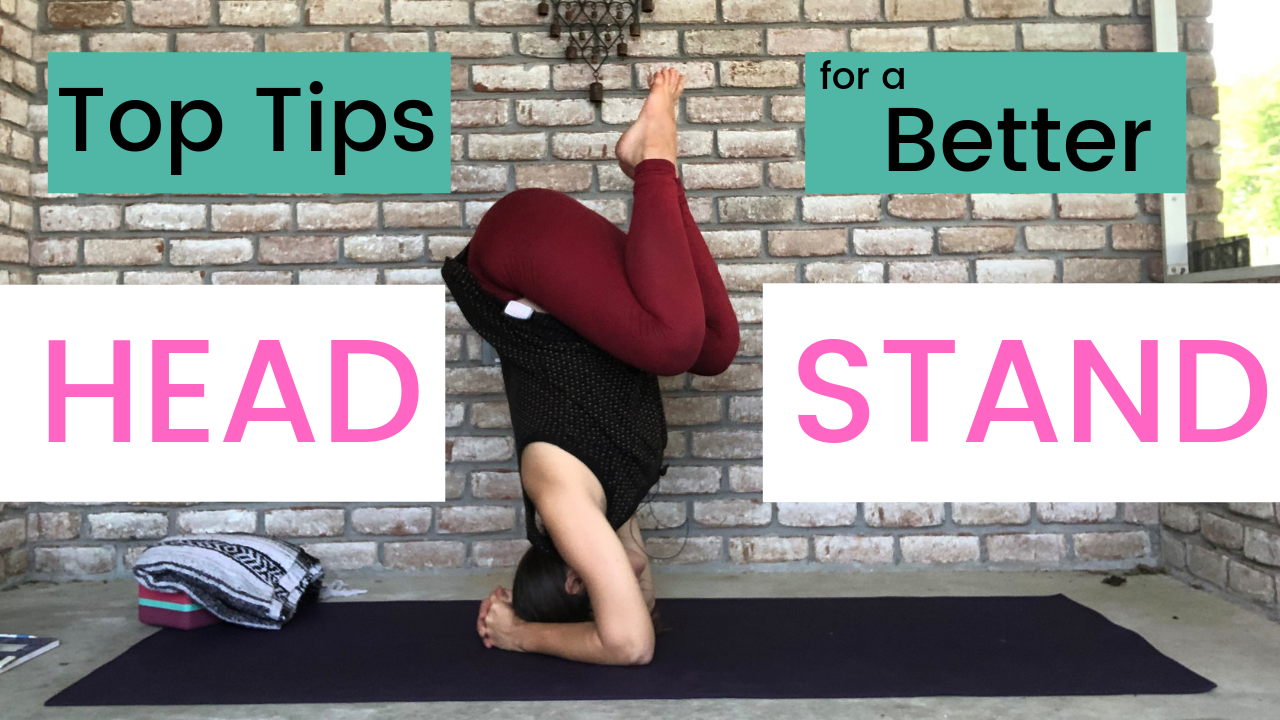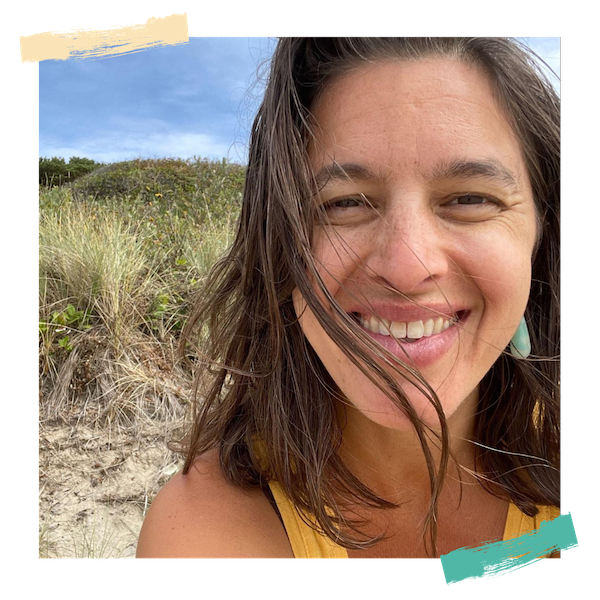You want to make sure you’re doing headstand right because you’re balancing on your head. Unfortunately, most yoga classes don’t give you much instruction other than, “if headstand is in your practice, go for it.” These are my top 3 tips for a better headstand.
Tip #1: No head basket. Make a fist from your 2 hands to support your head in headstand.
The headbasket is the most common way that people are taught (or not taught) to set up their hands for a headstand. The problem with the headbasket is that it’s not very supportive and doesn’t give you access to the strength you need from your arms in headstand.
Instead, make a fist with your 2 hands by interlacing your fingers. Then tuck your bottom-most pinky finger into the center of that 2-handed fist. Instead of placing your head into the palms of your hand (aka head basket), keep the fist of your 2 hands closed. Place your head in between your 2 wrists, so the fist of your hands can press into the floor and the back of your head simultaneously.
This position is a bit trickier and that’s a good thing. It requires more shoulder awareness and strength than the basket. You need to have strength and steadiness on your side if you’re going to do a headstand.
The basket also gives you less control. Your forearms and elbows and even your shoulders have more room to move when you’re upside down when your hands are in the basket formation behind your head. You don’t want more mobility when you’re upside down; you want more stability.
Tip #2: Don’t Kick Up into Headstand. Try lifting into “Eggstand” instead.
There is no need to rush getting into a headstand. Remember, headstand is about strength and stability, as well as perseverance. Kicking up into headstand is a rush job. It’s just about getting up and not “how you get up.”
How you get into headstand matters.
It matters because your head is a part of the foundation.
Think of it this way: In a handstand, you have lots of mobility because the only support you have on the ground is your hands. In a forearm stand, you have slightly less mobility because now your forearms on on the ground, but you can still move your head and shoulders.
Once your head is on the ground, you lose nearly all of the movement of your shoulders and head. This is actually a good thing. More foundation give you more support. However, it also means it will bear the load of the support. If you’re kicking up, it’s an uneven load. This, in of itself, is not inherently bad. However, if you have a stronger or dominant shoulder or an old neck injury or weakness, it can impact the muscles and tissues, as well as the bone structure in those places. And anything repetitive over a long period of time can do the same.
You’re better off lifting up into headstand symmetrically. I call it “Eggstand” because you’re all tucked in like an egg. Basically, it’s an upside down squat.
Plus, lifting up with control will give you exactly that: more control. More control over how you’re bearing weight in your head and neck, as well as more control in how you hold the pose upside down. Kicking up limits your control.
Tip #3: No premature leg extension.
This one might seem minor, especially in comparison to something like appropriate head placement or something like that. However, head placement is a bit more variable, based on your neck. Leg extension is relevant to everyone and it’s something that is rarely taught properly.
Here’s what usually happens:
You get into your lovely headstand tuck/eggstand/upside down squat. Then you extend your legs out and then pull them all the way up to vertical.
Here’s the problem with that:
You still have to get your legs vertical, while upside down. And while they’re in motion. That is not easy.
Here’s what you should do instead:
Get into your lovely headstand tuck/eggstand/upside down squat. Then, keeping your knees bent, pull your knees together and lift your knees straight up over your head. You feet will drop down toward your butt a little, which can be scary, because now your feet are behind you. However, in order to extend your legs straight, all you have to do is lift your feet and squeeze your butt a little.
You’ll be vertical instead of diagonal, so your hips will be stacked over your shoulders, which is where they are supposed to be for optimal headstand alignment.
Don’t be a premature headstand extended.
Go for the methodical, slow, steady lift so you can get into headstand more efficiently and effectively.
Like these tips for a better headstand, but need a visual? Check out my free video that explains all of these in detail!
And if you want to spend more time working on a stronger, steadier, more confident headstand, join me for headstand-focused practices all month long in my online yoga studio the Conscious Healthy Collective and the Collective LITE.
Use the code HEADSTAND at checkout and receive 50% off your first month of membership!



